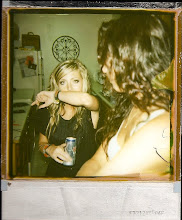#1: What are the five conditions that gave rise to the New Hollywood (here defined as post-1975)?
1) A new generation of directors (the movie brats)
2) new marketing strategies (centered on the blockbuster as a distribution and exhibition concept)--most specifically he refers to the High Concept filmmaking as the most significant.
3) new media ownership and management styles
4) new technologies of sound and image reproduction (from digitalized special effects to Dolby sound)
5) new delivery systems
#2: What does Elsaesser mean by New Hollywood being defined either as “the different as same” or “the same as different.” (p. 193)Citizen Coppola
--different as same- meaning if it is new in comparison to old hollywood (coppola playing at being an auteur maudit like Orson Welles) or the same as different- in that Hollywood is making films that are something new all together in comparison to films outside of Hollywood. Creating something new while taking from films outside of hollwood (Arthur Penn borrowing from Truffaut).
#3: Elsaesser argues that unlike in Europe, where ruptures in realism were found in art-cinema, in Hollywood ruptures in realism were found in “minor genres and debased modes.” What genre in particular is he talking about? In what ways do you find ruptures in realism in this genre?
--The B movies of the 1980s and 90's such as sci-fi, the 'creature-feature', or monster film--the genre of the horror film.
--disrupts the cause and effect patterns to create mystery--misleading the viewer by withholding information.
--leaving things off screen longer than classical editing, creating horror and curiosity for the audience.
#4: How is the sound/image relationship in horror films fundamentally different than other classical genres?
--emphasizes the presence of sound in order to make obvious the moments of its absence--the desynchronization of sound and image--keeping the sources of sound offscreen helps to destabilize the primacy the diegetic world over the extra-diegetic or non-diegetic world--drawing on visual disorientation. It draws attention to the viewer and the characters within the story's limited perspectives.
#5. How do allusions in Bram Stoker’s Dracula function like a mise-en-abyme?
--it is a self referencing text in respect to movie history, technology, and paintings.
--the film makes citations of at least sixty different films, including 30 of the dracula films. ex) Louis Lumiere's
Arrival of the Train and Jean Epstein's
The Fall of the House of Usher--itself a remake of Murnau's
Nosferatu.--there are allusions to paintings--such as a painting that the Count points to that is a portrait of himself is in reference to Albrecht Durer's self portrait
Self Portrait as the Young Christ --making it not only a citation, but also a mise-en-abyme of this citation as a metaphor as the self as 'other'.
#6: Elsaesser suggests that the film is a palimpsest for 100 years of film history. Why does he also conclude that the vampire film “qualifies as at once prototypical for movie history and for postmodernity.”? [Hint: see my recap of metaphors above.]
--the vampire myth and the story of dracula itself have been used so repetitively in films since Murnau's
Nosferatu in 1922 that it is obvious that any postmodern representation of the vampire film would be in result or in reference to these previous films. In both our minds and the film itself, it is inevitable to think about those previous films.
--The theme continues to be used throughout film.
--and just like film, which is undead because as an audience views it it is always in the present, so is the vampire film. Bc it has continuously been reworked, repeated, and become a cliche theme that triggers an instant nostalgia for the ones that came before, it too is undead.
--Along with the fact that the vampire is usually undead also.
#7: Put the following in your own words (p. 199): [Bram Stoker's Dracula's setting in 1897] “can also be understood as giving the director a historically secured vantage point…to put into play several distinct modes of representation, whose coexistence and frictions in the film help to define what might—in retrospect, so to speak—have been at stake aesthetically as well as for media technology and audiences in the shift from classical to post-classical.
[Hint: Break it down just as we did with the Kramer/Tasker quote in class. What were the "distinct modes of representation" in 1897? This may lead you to look up symbolism, pre-Raphaelites and decadence in the arts. How did these modes both co-exist and create frictions in 1897? How is this similar to 1997 and today (in the shift to the post-classical)?]
--In choosing 1897 as the setting, Coppola sets up the inevitable references to the time period. It was a time in which Decadence in the arts and the Pre-Raphaelites were around. They represented a time period in which one period was ending and another was beginning. The Pre-Raphaelites and the period of decadence were an attempt to make a break from the previous techniques and standards in art and literature and that time. The decadence period is seen as first in the avant garde movement, associated with symbolism and aesthetic. And just like that period in which the film is set, the film itself was on the verge of breaking from one period (classical) to another period (post classical).
--The Pre-Raphaelites wanted to return to the aesthetic techniques of Raphael, such as the "classical poses and elegant compositions--the return to abundant detail, intense color, and complex compositions." The Decadence period also going on at that time was "associated with symbolism and aesthetic movement."
to be continued...
